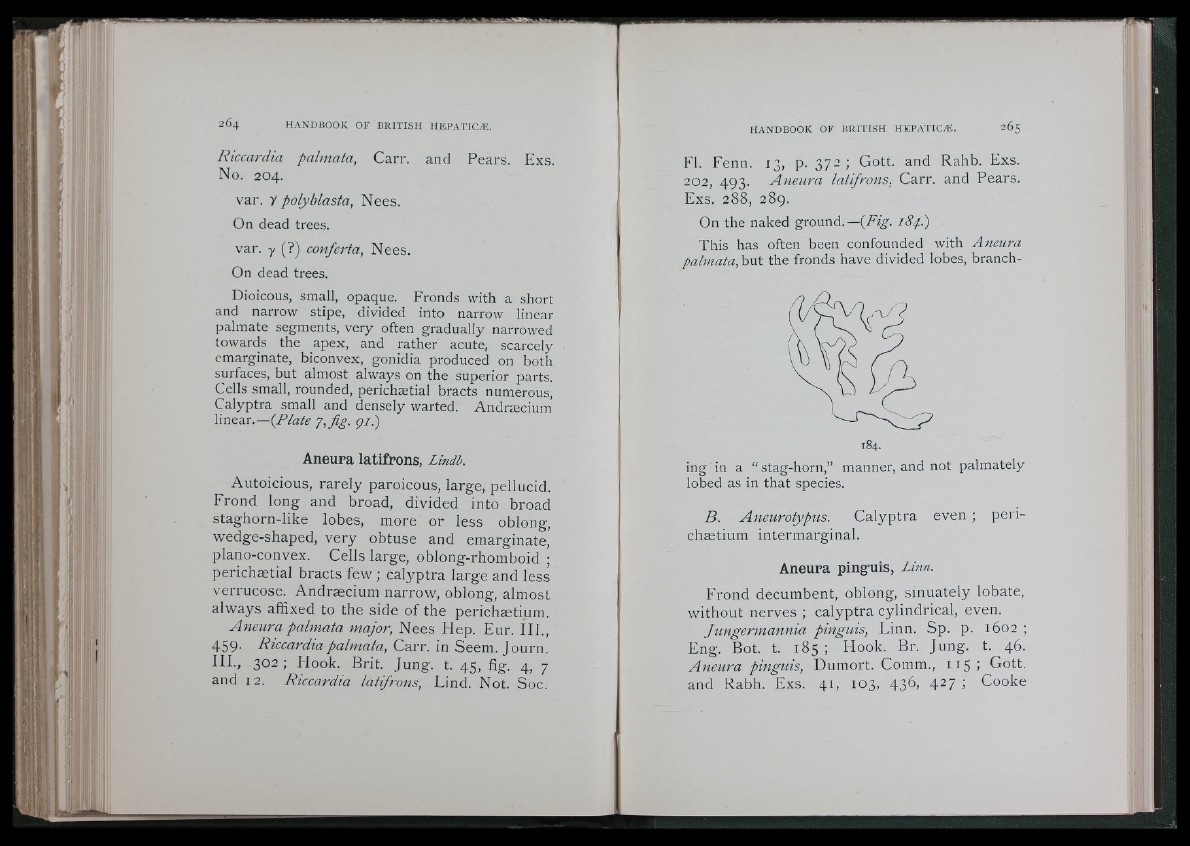
f f
lì
! ! íE
Riccardia palmata, Carr, and Pears. Exs.
No. 204.
var. y polyblasta, Nees.
On dead trees.
var. y (?) conferta, Nees.
On dead trees.
Dioicous, small, opaque. Fronds with a short
and narrow stipe, divided into narrow linear
palmate segments, very often gradually narrowed
towards the apex, and rather acute, scarcely
emarginate, biconvex, gonidia produced on both
surfaces, but almost always on the superior parts.
Cells small, rounded, perichætial bracts numerous,
Calyptra small and densely warted. Andræciiiin
linear.— (Plate 7, fig. ç i )
Aneura latifrons, Lindb.
Autoicious , rarely paroicous, large, pellucid.
Frond long and broad, divided into broad
s taghorn- like lobes, more or less oblong,
wedge-shaped, v e r y obtuse and emarginate,
plano-convex. Ce lls large, oblong-rhomboid ;
perichæt ial bracts few ; calypt ra large and less
verrucose. Andræc ium narrow, oblong, almost
a lwa y s affixed to the side of the perichæt ium.
A neura palmata major, Ne e s Hep. Eur. III.,
459. Riccardia palmata, Carr, in Seem. Journ.
HE, 302; Hook. Brit. Jung. t. 45, fig. 4, 7
and 12. Riccardia latifrons, Lind. Not. Soc.
El. Fenn. 13, p. 3 7 2 ; Cot t . and Rahb. Exs.
202, 493. A n eura latifrons, Carr, and Pears.
Exs. 288, 289.
On the naked ground.— (Ai/. 184)
This has often been confounded with Aneura
palinata,h\xt the fronds have divided lobes, branch-
184.
ing in a “ stag-horn,” m a n n e r , and not palmately
lobed as in that species.
B . Aneurotypus. C a lyp t ra even
chæt ium iniermarginal.
p en -
Aneura pinguis, Linn.
Frond decumbent , oblong, s inuately lobate,
wi thout nerves ; calypt ra cylindrical, even.
Jungermannia pinguis, Linn. Sp. p. 1602 ;
Eng. Bot. t. 1 8 5 ; Hook. Br. Jung. t. 46.
A neura pinguis, Dumort. Comm., 1 1 5 ; Cot t ,
and Rabh. Exs. 41, 103, 436, 427 ; Cooke